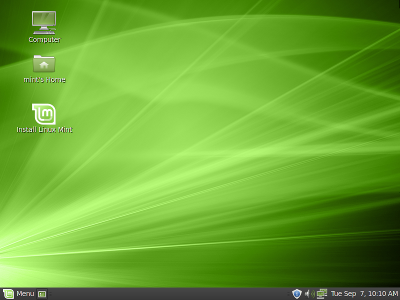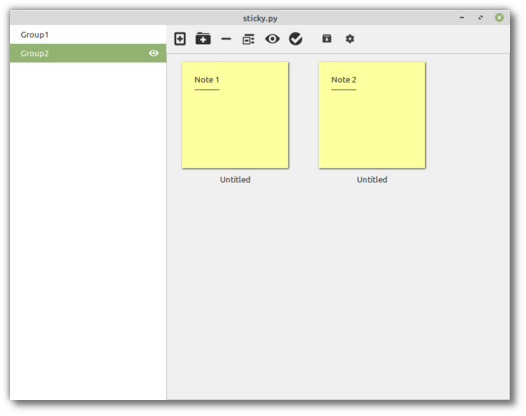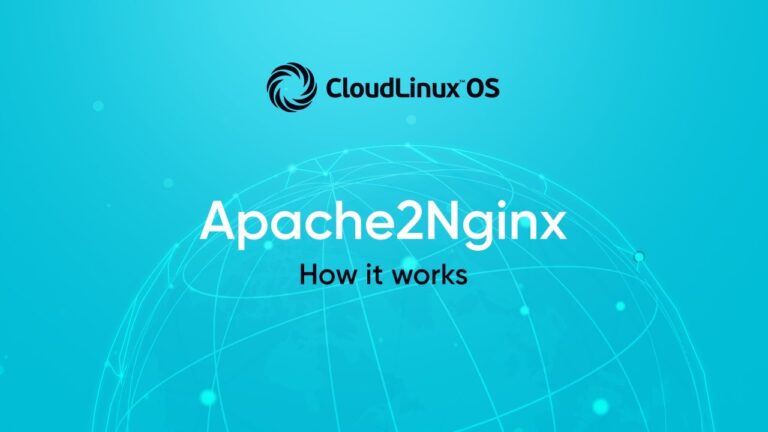
Linux Mint Debian (201009)
Today is very important for Linux Mint. It’s one day to remember in the history of our project as we’re about to maintain a new distribution, a rolling one, which promises to be faster, more responsive and on which we’re less reliant on upstream components. Linux Mint Debian Edition (LMDE) comes with a Debian base, which we transformed into a live media and on top of which we added a new installer. It’s rougher and in some aspects not as user-friendly as our other editions, it’s very young but it will improve continuously and rapidly, and it brings us one step closer to a situation where we’re fully in control of the system without being impacted by upstream decisions.
LMDE also represents an alternative, with the same desktop, the same functionality, but a different base, and a difference in hardware support and compatibility. In the scope of our distribution, and our role, which is to provide a modern and elegant operating system, it’s important to give people a choice. We did it with many upstream components. The Software Manager gives users an easy choice when it comes to selecting their favorite applications. We maintain editions for alternative desktops such as KDE, Xfce, Fluxbox and LXDE. And we also provide a choice between 32-bit and 64-bit architectures. From a technical point of view, a package base is a huge part of an operating system. It makes the system using it a derivative of the distribution maintaining it, something that is both based and fully compatible with it. From a user and project point of view though, this is yet another component, and like any other, it can be changed and replaced with alternatives. The Linux Mint desktop which you’ve come to enjoy on top of an Ubuntu base, can be ported to alternative package bases. By the past, I expressed my enthusiasm about this and my interest in experimenting with Debian, Fedora and our own independent base. Work started on Debian about 3 years ago, it was hesitant and we didn’t have the resources to make it a priority. After the release of Linux Mint 9 LTS, we decided to set some time aside for this project, and we’re now proud to announce that Linux Mint Debian Edition (LMDE) is out, and available for download!
Welcome to Linux Mint Debian. I’d like to thank all the testers and our development team, Ikey Doherty in particular, for the work that they put in it. I personally had a lot of fun working on this project, and I hope you’ll enjoy this new distribution.
Important links
- Download mirrors
- Known problems
- Changelog
LMDE in brief
- Linux Mint Debian Edition (LMDE) is a rolling distribution based on Debian Testing.
- At the moment, it comes as a 32-bit live DVD with a Gnome desktop.
- The purpose of LMDE is to look identical to the main edition and to provide the same functionality while using Debian as a base.
FAQ
1. Is LMDE compatible with Ubuntu-based Linux Mint editions?
No, it is not. LMDE is compatible with Debian, which isn’t compatible with Ubuntu.
2. Is LMDE fully compatible with Debian?
Yes, 100%. LMDE is compatible with repositories designed for Debian Testing or Debian Squeeze.
3. What is a rolling distribution?
LMDE constantly receives updates. Its ISO images are updated now and then but users do not require to re-install it on their systems.
4. How does LMDE compare to the Ubuntu-based editions?
Pros:
- You don’t need to ever re-install the system. New versions of software and updates are continuously brought to you.
- It’s faster and more responsive than Ubuntu-based editions.
Cons:
- Although it’s using Romeo for unstable packages, LMDE continuously changes as it receives updates and new software. Compared to a frozen version of Linux Mint which changes very little once it’s publicly released, it’s not as stable. Things are likely to break more often but fixes can also come quicker. For this reason, LMDE requires a deeper knowledge and experience with Linux, dpkg and APT.
- Debian is a less user-friendly/desktop-ready base than Ubuntu. Expect some rough edges.
5. Will it come in 64-bit? With KDE or other desktops?
The decision wasn’t made yet. LMDE is an experiment. Although we’re quite confident it will gain in popularity, we want to get an idea of how many users will switch to a Debian base before going further with it and bringing impacts to other editions. The idea of reaching the same level of functionality without using Ubuntu is quite challenging. It means there are missing pieces in the equation, components which need to be ported or re-written, and whether the pros outweight the cons, this is something we need to assess. A 32-bit Debian-based Gnome edition allows us to work on this with the community. When it’s fully on par with the Main Edition and if there is a demand for it, further editions will come for LMDE.
Additional notes:
- About the installer: The live installer is developed from scratch with Debian in mind. It’s configurable and it can be re-used by other Debian-based distributions. We noticed a lack in live technologies and in live Debian installers, so we’re happy to take the lead on this. If you’re a developer and you’re interested in using it, have a look at its source repository and don’t hesitate to contact us so we can help you fork it and merge upcoming changes between our two projects.
- About bugs: Please do not use Launchpad for bug reports. We’re considering the best strategy to collaborate with upstream Debian developers. In the meantimes, we opened the following forum thread.
- About the “wrong ISO”: We recorded that 0.3% of our user base got the wrong ISO, which was synced a few days ago. If you did, you can either download the correct one, or simply update live-installer using the update manager.
- About the media: It comes as a liveDVD. Locales work differently in Debian and the package base requires more space. We made LMDE compatible with unetbootin though, so you can install it using a USB stick.
- Dedicated chat room: #linuxmint-debian is open to new LMDE users on irc.spotchat.org.




